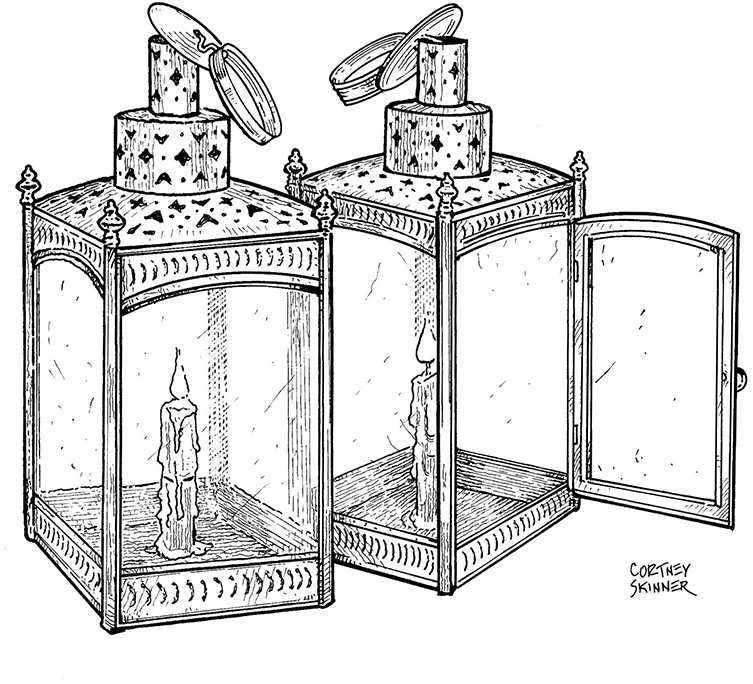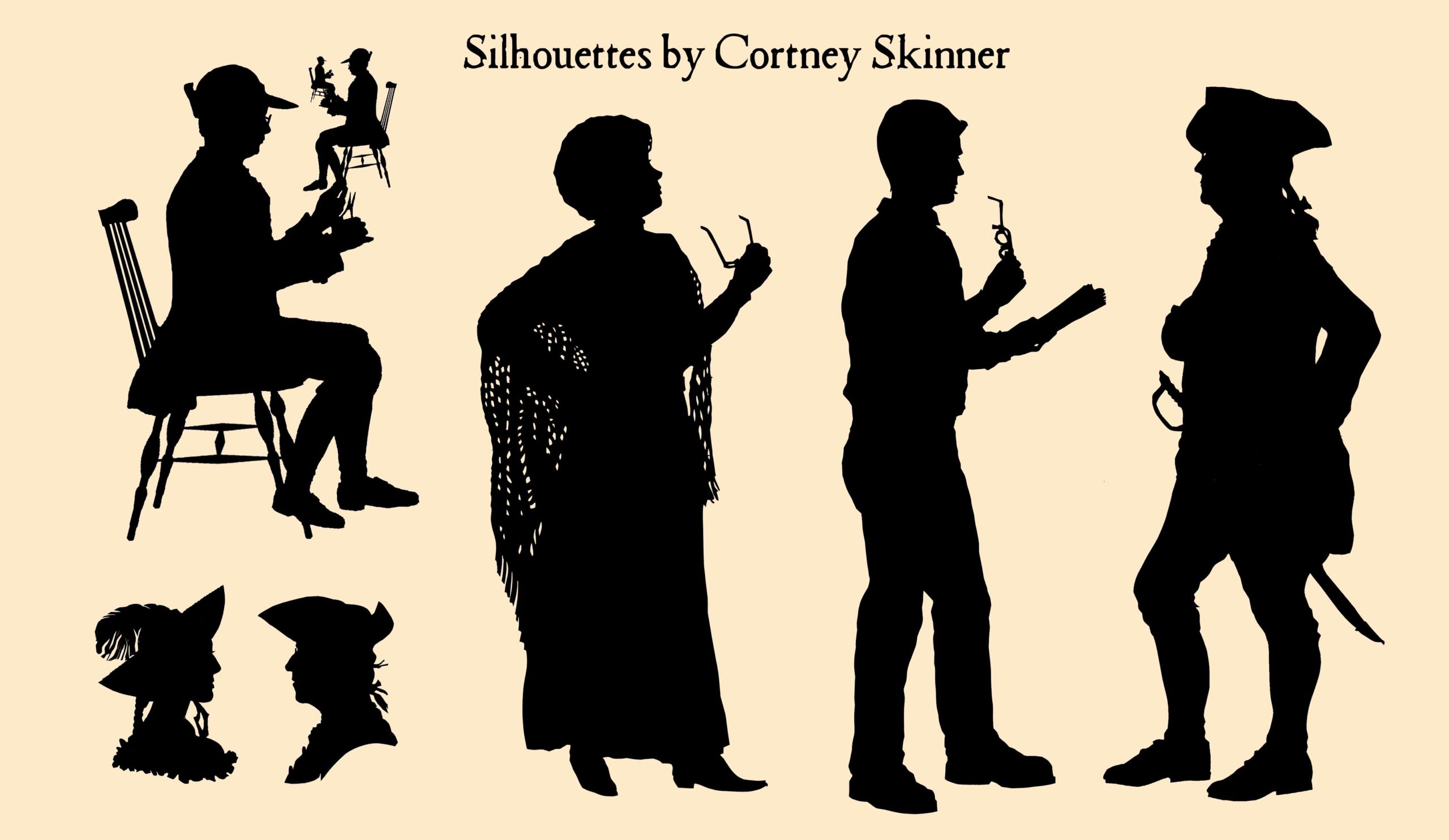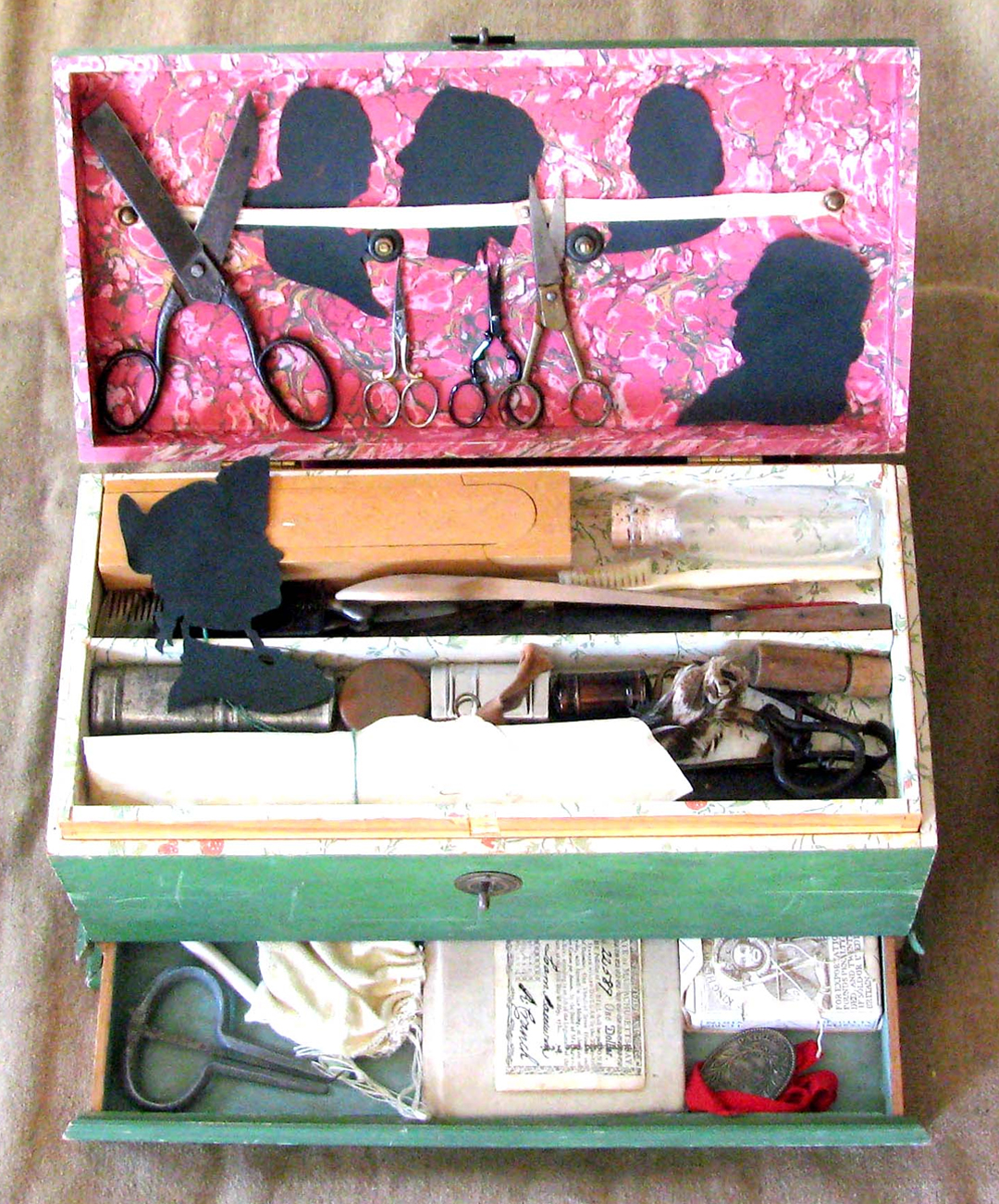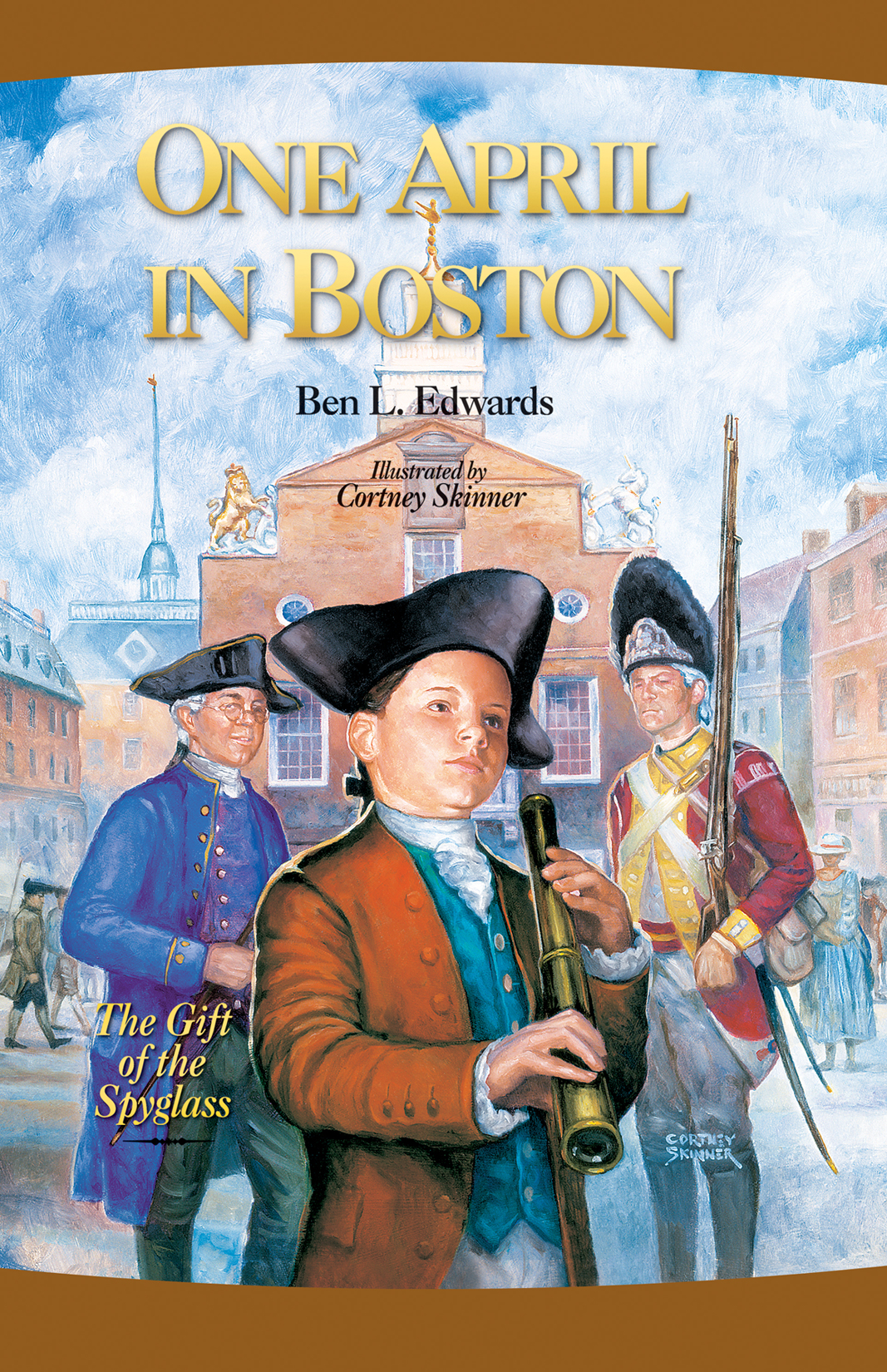One April in Boston
Making Silhouettes for One April in Boston
Profile Shades—An ancient art brought into the present
by Cortney Skinner | 12.16.19
When I was first approached in 1999 by Ben Edwards to do some illustrations for his upcoming book, One April in Boston, I was asked to create several silhouettes to portray his 18th-century Boston ancestors, since there were no surviving likenesses of them.
I have been interested in history since I was quite young. I also took part in reenacting and living history for decades. In the early 1970s, two friends and I created the first living history group to portray a Continental Line Regiment, the 1st Massachusetts Regiment.
As to silhouette cutting, it could be that the seed to that interest was planted by my kindergarten teacher, Miss Sheridan. Perhaps unbeknownst to her, she continued a tradition of silhouette cutting some 200 years old when she cut silhouettes of each child in her class. I still have mine. Though the paper is brittle, it still shows her simple artistry (and patience—it was a large class of some 25 children). She accomplished this by tracing a shadow cast from a lamp onto a piece of paper—a simple method used centuries earlier.
My silhouette cutting was a natural evolution from my interest in the Revolutionary War. Once the Bicentennial wound down after the 200th anniversary and the reenactment of the Siege of Yorktown, my interest shifted to civilian life of the 18th century. Being a freelance artist and illustrator, I figured that researching and portraying a traveling silhouettist and artist would be a natural progression in my interest in living history.
When Ben and I met, I was portraying an itinerant 18th-century silhouette cutter at historic sites. This included cutting silhouettes for the public at the Paul Revere House during their holiday celebrations. During those sessions, I related the history of the art while my clients sat for their likeness to be cut freehand from a folded piece of black paper resulting in two copies of their silhouette.
Along with assembling the proper period clothing to wear for portraying a person of my humble station, I began in-depth research into 18th-century artists, painters, and portraitists, along with the materials and mediums they used in their business and where and how they might ply their trades.
In the 18th century, portrait painters’ clientele were mainly the very well-to-do. A half-length oil portrait might cost the equivalent of about $4,200 today. However, a silhouette was much more affordable, being around 25¢ in 1775 for two duplicates of a head and shoulders cut from a folded piece of paper (about $8.00 in modern-day money).
Although I’ve painted 18th-century style portraits in oils and pastel, the time and materials to do it as a living history presentation wouldn’t work very well. Silhouettes were perfect for that since all that was needed were scissors and paper. A profile could be cut in minutes, and the sitter could take home an example of 18th-century art in the form of their likeness done on the spot.
The term “Silhouette” comes from Étienne de Silhouette, an unpopular 18th-century finance minister to France’s King Louis XV. His much-disliked cost-cutting measures made it so stinginess or penny-pinching was then labeled with his name. However, this name for profiles cut from paper did not become widely used until the late 18th century. Much more commonly, “profile shades,” “shadow portrait,” and other terms were used during the years of the American Revolution.
The photo above of my recreated 18th-century artist box shows some of the simple tools of the profile cutter’s trade. In the lid at the lower right can be seen my profile cutting of Paul Revere based on the early 19th-century profile drawing of Revere by Charles de Saint-Mémin who used a device called the physiognotrace to make his drawing.
The history of silhouette cutting is too extensive to cover in this blog post. However, as in the 18th century, when technology such as the physiognotrace and various lenses or optical methods were used to cut profile shades, I used today’s technology to create silhouettes for One April in Boston—in this case, a computer, digital stylus, and tablet. When cutting paper silhouettes of sitting subjects, I cut directly from the paper without any preliminary drawing. However, with the silhouettes for One April in Boston that portray Ben and Betsey, I based them on photos of Mark Schmidt and his sister Lynelle. The other silhouettes include Uncle Alex, Aunt Sarah, Thomas Sherburne, Rebecca Edwards, Sally Edwards, and Paul Revere Jr.
In order to make these silhouettes quickly and print-ready for the book, I scanned in the photos of Mark and Lynelle’s profiles. Using a digital stylus and tablet, I traced the contours of their faces, then drew the outlines of their 18th-century style clothing. For the other characters, I either drew them freehand in a digital art program or scanned in silhouettes I had cut of my previous sitters. For those silhouettes, I had cut two copies from folded paper and kept a copy for my records—a common practice of silhouettists of the 18th century. Back then, duplicates acted as a kind of “negative” from which additional copies could be made on request without requiring a second sitting.
Though I very much enjoy cutting silhouettes in the 18th century manner, “with the scissors only”— as some trade cards of the period would boast—I also appreciate the modern tools that the artists of the 21st century can avail themselves of. No matter what era they work in, artists will always take advantage of whatever benefits technology might give them in the pursuit of their work.
By the way, I still cut silhouettes by hand, either in person or—now with the modern convenience of the internet—long distance via digital photos & email. If you’re interested, please contact me at curatorBMNH@comcast.net and I’ll send you a paper or pdf brochure of choices and prices.
Buy the Book Here
Direct from the Author
Paul Revere House - Boston
About This Blog
The Spyglass Blog was created to mark the 20th anniversary of the children’s book One April in Boston. Here the author and illustrator share the stories behind the illustrations, give insight into the artistic process, and introduce related artwork Ben Edwards shares on his Walking Boston private tour. SpyglassBlog.com
Subscribe
Receive notice by email when a new post has been added to the Spyglass Blog.
Meet the Author
Boston’s only private guided walking tour with a children’s book author and relative of Paul Revere. Details below.
Family Tours
Three private tour options. A fun and educational tour of the Freedom Trail your children will love! BostonFamilyTour.com
Field Trips
Field trips for the 2019-2020 school year are Sold Out. Booking now for the fall of 2020. BostonFieldTrip.com
Homeschool Groups
A unique field trip for homeschoolers that teaches your children American history and inspires them to create goals. Homeschool-FieldTrip.com






